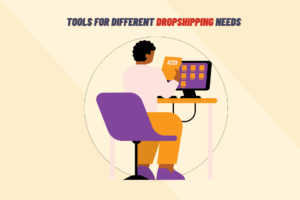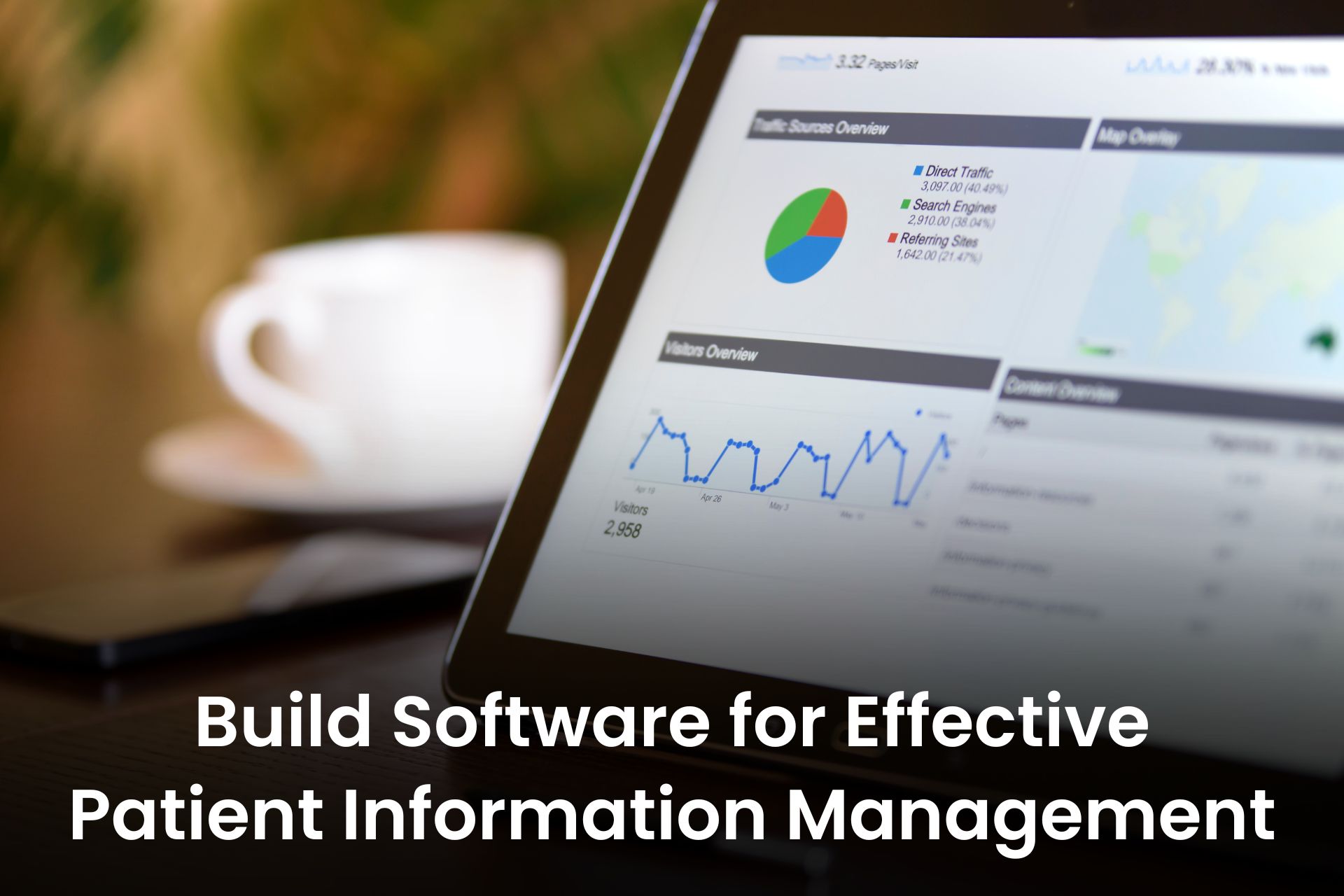How to Build Your Online Business with Dropshipping
Dropshipping is a way of selling products online without needing to keep them in stock. Instead, when someone buys from your online store, you purchase the product from a supplier who then ships it directly to the customer. This means you don’t have to store or handle the products yourself. The dropshipping market is poised for remarkable growth, projected to almost double to $476.1 billion by 2026 from $243.42 billion in 2023. It’s convenient for starting an online business because you don’t need to invest in inventory upfront. However, profit margins can be lower, and there may be challenges like longer shipping times.
Benefits And Challenges Involved In Dropshipping

Dropshipping is a retail method where a store doesn’t keep the products it sells in stock. Instead, when a product is sold, it’s purchased from a third party who then ships it directly to the customer. This means the seller doesn’t handle the product physically.
Benefits:
1. Low Initial Investment: Since you don’t need to buy inventory upfront, the initial investment is low, making it accessible for entrepreneurs.
2. Reduced Overhead Costs: Without the need for warehousing or managing inventory, overhead costs are significantly lower.
3. Wide Product Selection: You can offer a wide range of products without the constraint of physical storage space.
5. Flexibility: Dropshipping allows for flexible location and time management, as you can operate your business from anywhere with an internet connection.
Challenges:
1. Lower Profit Margins: Since you’re not buying products in bulk, the profit margins tend to be lower compared to traditional retail models.
2. Inventory Management: You rely on suppliers for inventory management and fulfillment, which can lead to issues such as stockouts or backorders.
3. Quality Control: You may face challenges ensuring the quality of products and the reliability of suppliers, which can impact customer satisfaction.
4. Shipping Complexities: Longer shipping times and shipping costs can be a drawback, potentially leading to customer dissatisfaction.
5. Competitive Market: Dropshipping has low barriers to entry, leading to high competition and potentially saturated markets.Only 10% of dropshippers are profitable in their first year.
Overall, while dropshipping offers low barriers to entry and flexibility, it also comes with challenges such as lower profit margins and reliance on third-party suppliers, which need to be carefully managed for success.
How To Start A Dropshipping Business
To start a dropshipping business, begin by thoroughly researching various niches to identify one that aligns with your interests and has potential demand. Utilize tools such as Google Trends and Amazon Best Sellers to assess market interest and competition. For instance, recent studies indicate that 30% of dropshipped goods consist of electronics.Once you’ve chosen a niche, conduct thorough supplier research to find reputable dropshipping partners who offer quality products and reliable shipping.
Popular platforms like AliExpress, Alibaba, or SaleHoo are excellent starting points for finding suppliers. Reach out to potential suppliers to inquire about their dropshipping policies, product quality, and shipping times. Once you’ve established partnerships with suppliers, it’s time to set up your online store.
Setting Up An Online Store:
1. Choose an e-commerce platform: When setting up your online store, the first step is to select an e-commerce platform that suits your needs. Popular options include Shopify, WooCommerce, BigCommerce, Magento, and Squarespace. Consider factors like pricing, features, customization options, scalability, and ease of use. Once you’ve chosen a platform, you can proceed with setting up your store.
2. Select a domain name: Your domain name is the web address where customers will find your online store. Brainstorm potential domain names that reflect your brand, niche, and target audience. Use domain registration websites like GoDaddy, Namecheap, or Google Domains to check availability. Choose a domain name that is memorable, easy to spell, and relevant to your business.
3. Customize your store’s design: Customize your store’s design to create a visually appealing and professional storefront. Explore the customization options provided by your chosen e-commerce platform, and select a theme or template that aligns with your brand identity. Customize your store’s logo, color scheme, typography, and layout to create a cohesive look. Ensure that your store is optimized for mobile responsiveness to provide a seamless shopping experience across all devices.
4. Create compelling product listings: Your product listings play a crucial role in attracting and converting customers. Write detailed and persuasive product descriptions that highlight key features, benefits, and specifications. Use high-quality images and videos to showcase your products from multiple angles and in different contexts. Incorporate relevant keywords into your product titles, descriptions, and tags to improve search engine visibility. Set competitive pricing based on market research and competitor analysis.
5. Configure payment gateways: Integrate payment gateways that support secure and convenient payment methods such as credit/debit cards, PayPal, Apple Pay, Google Pay, etc. Ensure that your chosen payment gateways comply with industry-standard security protocols to protect customer payment information. Test the checkout process to ensure that payments are processed smoothly and securely.
6. Set up shipping options and policies: Determine your shipping strategy, including shipping zones, rates, and delivery times. Offer multiple shipping options such as standard shipping, expedited shipping, and international shipping. Clearly communicate your shipping policies, including processing times, shipping costs, and return/exchange procedures, on your website. Integrate shipping calculators or real-time shipping rate calculators to provide accurate shipping cost estimates to customers during checkout.
By following these steps, you can effectively set up an online store that is visually appealing, user-friendly, and optimized for sales conversion.
Marketing Your Products
With your store set up, it’s time to develop your marketing strategy. Define your target audience and develop buyer personas to guide your marketing efforts. Utilize social media platforms like Facebook, Instagram, and Pinterest to showcase your products and engage with your audience. Implement search engine optimization (SEO) tactics to improve your store’s visibility in search engine results.
Consider running paid advertising campaigns on platforms like Google Ads or Facebook Ads to drive targeted traffic to your store. Leverage email marketing to nurture leads, promote new products, and encourage repeat purchases. Collaborate with influencers or bloggers in your niche to reach a wider audience and gain credibility.
Once your marketing strategy is in place, launch your dropshipping business and monitor its performance closely. Track key metrics like website traffic, conversion rates, and sales to assess your store’s success. Gather feedback from customers and use it to improve your products, services, and overall shopping experience.
Experiment with different marketing tactics, product offerings, and pricing strategies to optimize your business. Stay informed about industry trends, competitor activity, and customer preferences to adapt your strategy accordingly. By remaining committed to your dropshipping business and continuously iterating and refining your approach, you can build a successful and sustainable online venture.
Some Practical Tips For Running A Successful Dropshipping Business

Running a successful dropshipping business requires more than just slapping up a website and waiting for sales. Here are some practical tips to keep in mind:
-
- Choose Wisely: Select a niche with ample demand and manageable competition. Conduct thorough research to identify profitable opportunities aligned with market trends and consumer preferences.
- Forge Strong Partnerships: Establish relationships with reliable suppliers known for quality products and efficient shipping. Clear communication and mutual trust are key to smooth operations and timely deliveries.
- Curate Your Offerings: Carefully curate your product selection to showcase high-demand items within your niche. Regularly assess sales data and customer feedback to fine-tune your offerings and stay ahead of market trends.
- Price Strategically: Set competitive prices that appeal to customers while ensuring healthy profit margins. Explore dynamic pricing strategies like bundle offers or limited-time discounts to drive sales and boost average order value.
- Prioritize Customer Experience: Provide comprehensive product information and responsive customer support to facilitate informed decision-making and resolve inquiries promptly. Streamline the checkout process and offer diverse payment options for added convenience.
Tools for Different Dropshipping Needs

Choosing the right tools depends on your budget, technical skills, and dropshipping model. Start with a few essential tools and explore others as your business grows. Here are some tools that can be beneficial for different Dropshipping needs for your online store.
Product Research & Sourcing:
-
- Spocket: Connects with US & EU-based suppliers offering fast shipping and lower fulfillment costs.
- SaleHoo: Provides verified dropshipping suppliers with product data and pricing information.
- Minea: Tracks trending products across social media platforms and analyzes their performance.
- Ecomhunt: Curates trending and profitable dropshipping products with sales data and insights.
- Aliexpress Dropshipping Center: Official source for AliExpress dropshipping with product recommendations and supplier details.Alibaba Group, who own dropshipping site AliExpress, generate over $780 billion ecommerce sales annually.
Store & Marketing:
-
- Shopify: Popular platform for building dropshipping stores with various apps and integrations.
- WooCommerce: Open-source platform offering flexibility and customization, ideal for developers.
- Oberlo (now part of Shopify): Simplifies adding AliExpress products to your Shopify store and automates order fulfillment.
- Dropified: Similar to Oberlo, but offers additional features like automated pricing rules and branding options.
- Canva: Easy-to-use design tool for creating product images, social media graphics, and marketing materials.
- Facebook Ads & Google Ads: Powerful advertising platforms to reach targeted audiences and drive traffic to your store.
Inventory & Order Management:
-
- AutoDS: Automates many dropshipping tasks like order fulfillment, inventory management, and pricing rules.
- Inventory Planner: Helps forecast demand and optimize inventory levels based on sales data.
- Orderhive: Manages orders across multiple sales channels and suppliers, simplifies fulfillment process.
Analytics & Optimization:
-
- Google Analytics: Provides detailed website traffic and performance data to analyze customer behavior and improve conversions.
- Hotjar: Helps visualize user behavior on your website through heatmaps and recordings, identify usability issues.
- Zik Analytics: Tracks key dropshipping metrics like product profitability, marketing ROI, and customer lifetime value.
Additional Resources:
-
- Shopify Blog: Articles and guides on dropshipping best practices, marketing strategies, and store design.
- Oberlo Dropshipping Guide: Free ebook covering the basics of starting a dropshipping business.
- Doba Resources: Guides and articles on various dropshipping topics, including product selection and marketing.
Bonus Tip: Utilize free trials and demos before committing to paid subscriptions.
Conclusion
In conclusion, dropshipping offers a low-risk entry into e-commerce, allowing entrepreneurs to sell products without holding inventory. While it provides flexibility and wide product selection, challenges like lower profit margins and supplier reliability exist. Success hinges on niche selection, strong supplier partnerships, effective marketing, and prioritizing customer satisfaction. With dedication and adaptability, dropshipping businesses can flourish in the competitive online marketplace. BharatLogic can help you from digital marketing services to custom website development for your ecommerce business
FAQ’s
Question: What is dropshipping, and how does it differ from traditional retail?
Answer: Dropshipping is a retail fulfillment method where a store doesn’t keep the products it sells in stock. Instead, when a product is sold, it’s purchased from a third party who then ships it directly to the customer. This differs from traditional retail where the store purchases and holds inventory.
Question: What are the primary benefits of starting a dropshipping business?
Answer: The primary benefits of starting a dropshipping business include low startup costs, minimal risk, location flexibility, and a wide range of product selection without the need to manage inventory.
Question: What are some common challenges that dropshipping entrepreneurs face?
Answer: Common challenges in dropshipping include lower profit margins, dependency on suppliers for product quality and fulfillment, customer service issues, and intense competition.
Question: How do I choose the right niche for my dropshipping business?
Answer: To choose the right niche for a dropshipping business, entrepreneurs should consider factors such as market demand, competition level, profit potential, and personal interests or expertise.
Question: What criteria should I consider when selecting dropshipping suppliers?
Answer: When selecting dropshipping suppliers, entrepreneurs should consider factors such as product quality, reliability, pricing, shipping times, and customer service.
Question: What are some effective marketing strategies for promoting a dropshipping business?
Answer: Effective marketing strategies for dropshipping businesses include social media marketing, search engine optimization (SEO), content marketing, email marketing, influencer collaborations, and paid advertising.
Question: How can I ensure a positive customer experience in my dropshipping store?
Answer: Ensuring a positive customer experience in a dropshipping store involves providing clear product information, responsive customer support, streamlined checkout processes, and reliable shipping.
Question: What tools and resources are available to help streamline and automate dropshipping operations?
Answer: Tools and resources available to help streamline and automate dropshipping operations include e-commerce platforms like Shopify and WooCommerce, dropshipping apps like Oberlo, inventory management software, and marketing automation tools.
Question: What are the potential risks and pitfalls of dropshipping, and how can they be mitigated?
Answer: Potential risks and pitfalls of dropshipping include lower profit margins, supplier issues such as stockouts or shipping delays, product quality concerns, and market saturation. These risks can be mitigated through careful supplier selection, efficient operations, and effective marketing strategies.
Question: Are there any legal considerations or regulations I need to be aware of when starting a dropshipping business?
Answer: Legal considerations for dropshipping businesses may include obtaining necessary business licenses or permits, complying with consumer protection laws, adhering to tax regulations, and ensuring compliance with e-commerce regulations such as data privacy laws. It’s advisable to consult with legal professionals or experts to understand specific legal requirements in your jurisdiction.




